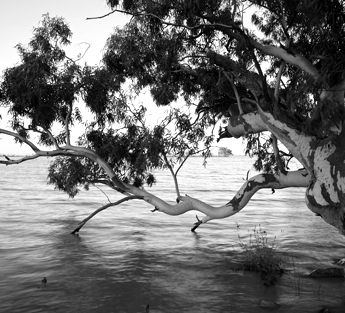Murray birthday marked
 States are celebrating the 20th anniversary of The Living Murray Program.
States are celebrating the 20th anniversary of The Living Murray Program.
The Living Murray program is a pioneering initiative in the restoration and safeguarding of the Murray River system.
The Living Murray (TLM) program, a precursor to the 2012 Basin Plan, was launched in response to alarming evidence of the prolonged deterioration of the Murray River system's health.
In 2003, the Murray–Darling Basin Ministerial Council initiated The Living Murray program, investing $500 million over five years to recover 500 gigalitres (GL) for six 'icon sites' along the Murray, taking a significant step toward restoring the river's health and functionality.
MDBA Chief Executive, Andrew McConville, says an enduring partnership between the Australian Government and Basin state governments has seen the restoration and preservation of this vital natural resource.
Over the program's lifespan, the health of iconic River Murray sites has improved significantly due to infrastructure enhancements, land and river management practices, and environmental water allocation.
Twenty years ago, all icon sites were stressed, rated as 'fair ecological condition' or 'in need of attention.'
Today, most of these sites are classified as 'good' or 'excellent condition,' demonstrating the positive impact of a sustained commitment to river restoration.
The New South Wales Department of Planning and Environment’s Deputy Secretary – Water, Amanda Jones, said TLM demonstrates the tangible environmental outcomes that can be achieved when state governments and the Australian Government work closely together.
“This program would not be the success it is without the Indigenous Partnership and the role played by Traditional Owners to drive program priorities, undertake monitoring, cultural heritage and land management works on country,” Ms Jones said.
Victoria Department of Energy, Environment and Climate Action Acting Deputy Secretary Water and Catchments Andrew Fennessy said in Victoria, environmental works were constructed at several sites funded by the Living Murray program, including Hattah Lakes and Gunbower Forest.
“This enabled about 12,000 ha of high value floodplains to be watered with exactly the required flow patterns, even during droughts,” Mr Fennessy said.
“Victoria continues to look to protect our floodplains and wetlands through new projects such as the Victorian Murray Floodplain Restoration Project.”
South Australia Department for Environment and Water Acting Director, Water Infrastructure and Operations Lisa Stribley said investment in The Living Murray has resulted in significant ecological improvements at the program’s icon sites in South Australia.
“The 20 years of continuous robust data collection both provides testament to the changing ecological conditions at the icon sites and highlights the positive outcomes of increased water delivery to these sites”, Ms Stribley said.








 Print
Print